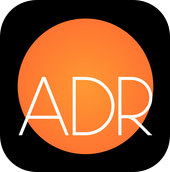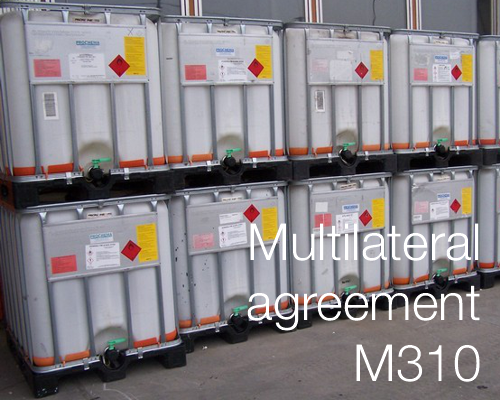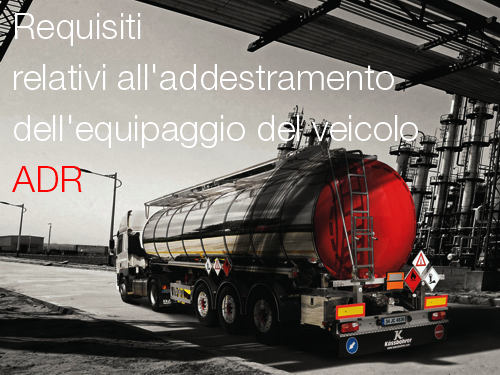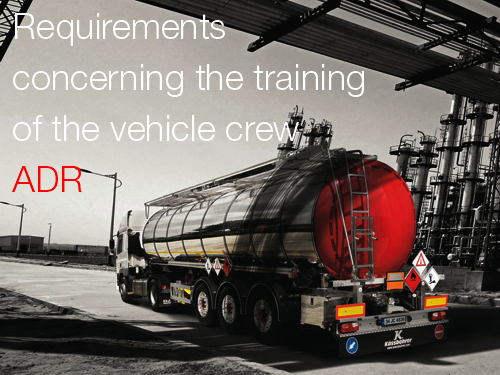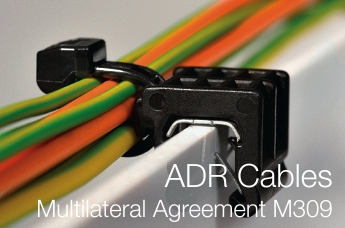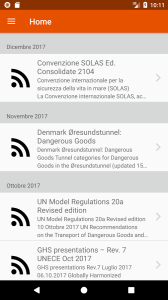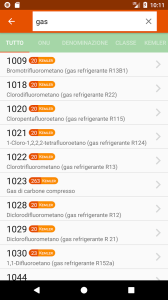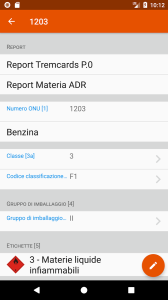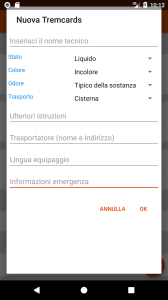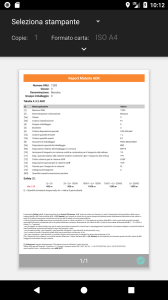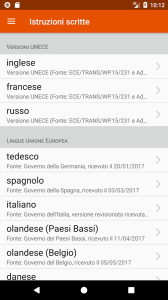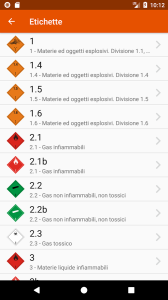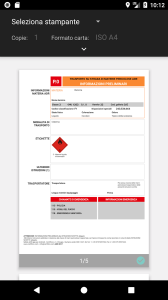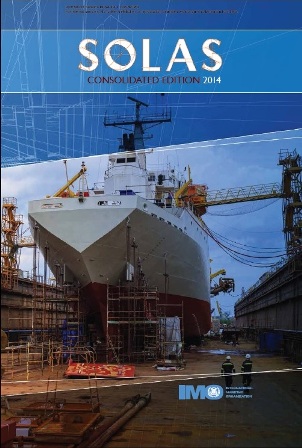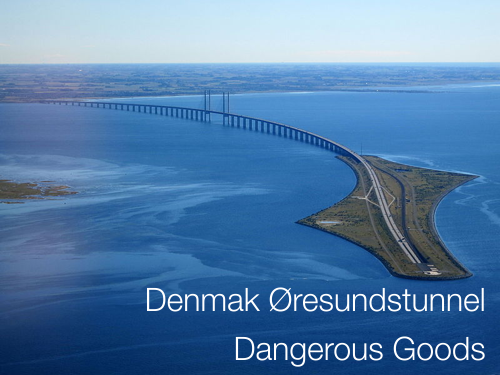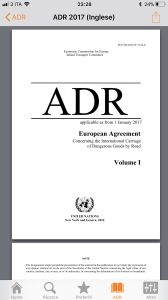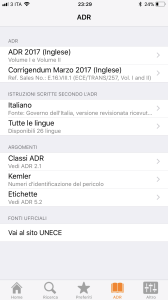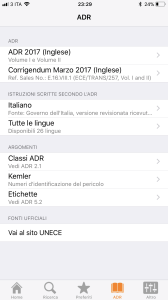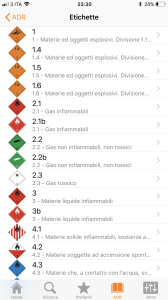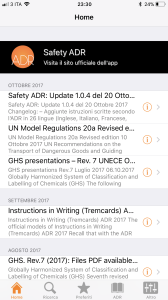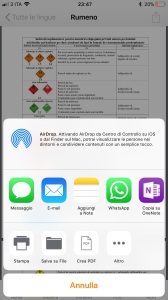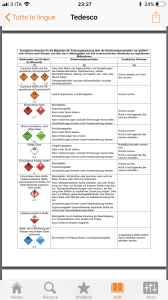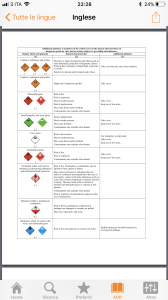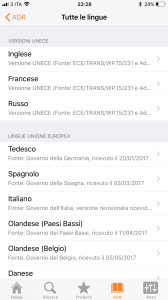Safety ADR / Dangerous Goods App
Safety ADR© is an app for the transport of ADR dangerous goods which allows you to:
– view the entire Table A chap. 3.2 ADR per ONU/denominazione/classe/altro* (Italiano, Inglese);
– fill in the "Subject Report" for each ADR subject with the "Safety" parameter (1) (Italiano, Inglese);
– fill in the "Tremcards P" for each ADR subject.0” (2) (Italiano, Inglese);
– consult the Written Instructions according to the ADR (Inglese, Italiano, Francese, Russo, Danese, Lettone, Norvegese, Svedese, Tedesco, Ungherese, Romeno, Portoghese, Ceco, Spagnolo, Turco, Sloveno, Slovacco, Estone, Neerlandese (Belgio), Neerlandese (Paesi Bassi), Polacco, Finlandese, Lituano, Bulgaro, Greco, Serbo);
– have real-time news displayed directly on Home;
– consult the ADR agreement (Inglese, Francese);
– consult the ADR labels, le classi, i Kemler (Italiano, Inglese).
Multilateral Agreement M310
Multilateral Agreement M310
Multilateral Agreement Under paragraph 1.5.1 of ADR, concerning the transport of UN 2672 ammonia solution in rigid and composite IBCs
1. By derogation from the requirements of section 4.1.1.10, IBC03, UN 2672 ammonia solution with up to but not more than 35% ammonia may also be carried in rigid or composite plastics IBCs of types 31H1, 31H2 and 31HZ1.
2. The IBC shall be provided with a device to allow venting during carriage. The inlet to the venting device shall be sited in the vapour space of the IBC under maximum filling conditions during carriage and shall meet the provisions of section 4.1.1.8 of ADR.
3. The IBC (s) shall only be carried in an ‘open vehicle’ as defined in chapter 1.2.1 of ADR.
4. This derogation shall not be applicable to carriage through the Channel Tunnel.
5. The consignor shall enter in the transport document: “Carriage agreed under the terms
of section 1.5.1 of ADR (M310)”
6. This agreement shall be valid until 31 January 2022 for the carriage on the territories of those ADR Contracting Parties signatory to this agreement. If it is revoked before then by one of the signatories, it shall remain valid until the above mentioned date only for carriage on the territories ofthose ADR Contracting Parties signatory to this agreement which have not revoked it.
Dublin, 25 January, 2018
For the Competent Authority in Ireland for ADR
| COUNTRY | SIGNED | REVOKED |
| Ireland | 25/01/2018 | |
| United Kingdom | 26/01/2018 | |
| Italy | 28/03/2018 |
Date of expiry: 1 February 2022 (corrected)
Multilateral Agreement in English
Explanatory letter in English
Requisiti relativi all’addestramento dell’equipaggio del veicolo ADR
Formazione conducenti – C.F.P. ADR
Capitolo 8.2 ADR 2017
La materia sulla formazione professionale dei conducenti è disciplinata dall’ADR nel capitolo 8.2 relativo all’equipaggio del veicolo.
E’ previsto che i conducenti dei veicoli destinati ai trasporti nazionali ed internazionali di merci pericolose su strada, devono essere muniti di apposito certificato di formazione professionale previsto dall’ADR, noto anche come “patentino ADR”.
Il certificato di formazione professionale è obbligatorio sia per i trasporti nazionali che per quelli internazionali, con veicoli con qualsiasi massa complessiva a pieno carico per quantitativi superiori a quelli di esenzione indicati nel capitolo 1.1.3.6.
[alert]Il certificato di formazione professionale è obbligatorio sia per i trasporti nazionali che per quelli internazionali, con veicoli con qualsiasi massa complessiva a pieno carico per quantitativi superiori a quelli di esenzione indicati nel capitolo 1.1.3.6.[/alert]
Per la guida dei veicoli di qualsiasi massa (anche inferiore a 3,5 t) adibiti al trasporto nazionale o internazionale (in tutti gli Stati firmatari dell’accordo ADR) di merci, classificate pericolose ai sensi dell’ADR, che superano i limiti di esenzione è obbligatorio il possesso del certificato di formazione professionale (CFP).
Qualora il CFP non sia obbligatorio, il conducente, al pari di ogni altro personale che ha a che fare col trasporto di merci pericolose, deve aver comunque ricevuto un’adeguata formazione.
I conducenti conseguono il patentino dopo aver seguito i corsi di formazione ed aver superato i relativi esami scritti mediante l’utilizzo di questionari.
Il certificato di formazione professionale ha una validità massima di cinque anni.
Nell’anno che precede le relative scadenze, tutti i conducenti potranno ottenere il rinnovo del patentino esclusivamente se superano il corso di aggiornamento ed i successivi esami scritti corrispondenti alla formazione posseduta.
All’interno dello stesso certificato vi sono quattro abilitazioni: base e tre diverse specializzazioni (cisterna, esplosivi, radiottivi).
Requirements concerning the training of the vehicle crew ADR
Requirements concerning the training of the vehicle crew
Chapter 8.2 ADR 2017
The subject on the professional training of drivers is governed by the ADR in chapter 8.2 relating to the vehicle crew.
It is envisaged that drivers of vehicles destined for national and international transport of dangerous goods by road must be provided with a specific professional training certificate provided for by the ADR, also known as the “ADR license”. The certificate of professional training is mandatory for both national and international transport, with vehicles with any total mass at full load for quantities greater than the exemption indicated in chapter 1.1.3.6.
The certificate of professional training is mandatory for both national and international transport, with vehicles with any total mass at full load for quantities greater than those of exemption indicated in chapter 1.1.3.6.
For driving vehicles of any mass (even less than 3.5 t) used for national or international transport (in all States signatories of the ADR agreement) of goods, classified as dangerous according to the ADR, which exceed the limits of exemption is mandatory possession of the certificate of professional training (CFP).
If the CFP is not mandatory, the driver, like any other personnel dealing with the transport of dangerous goods, must have received adequate training. Drivers obtain the license after following the training courses and have passed the related written exams through the use of questionnaires.
The vocational training certificate is valid for up to five years. In the year preceding the relative deadlines, all drivers will be able to obtain the renewal of the license only if they pass the refresher course and the subsequent written exams corresponding to the training held. Within the same certificate there are four qualifications: basic and three different specializations (cistern, explosives, radioactive).
UN Transport Agreements and Conventions: 50 parties 2018
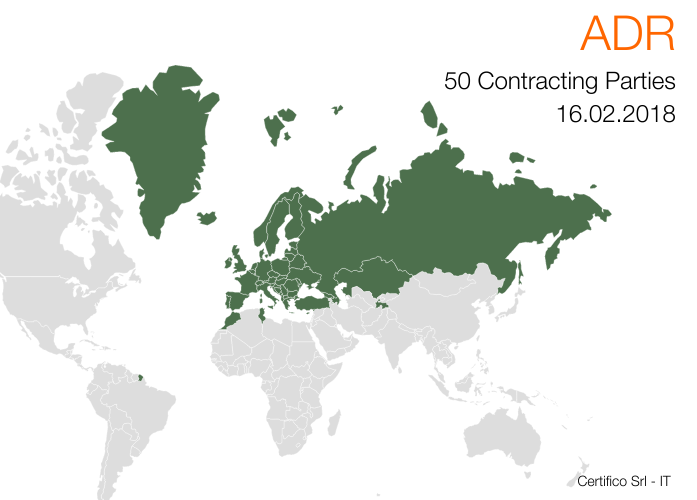
UN Transport Agreements and Conventions: ADR (map of contracting parties)
Update 16.02.2018
15.01.2018: San Marino acceded to the European Agreement concerning the International Carriage of Dangerous Goods by Road (ADR)
European Agreement concerning the International Carriage of Dangerous Goods by Road (ADR), of 30 September 1957
50 Contracting Parties:
Albania, Andorra, Austria, Azerbaijan, Belarus, Belgium, Bosnia and Herzegovina, Bulgaria, Croatia, Cyprus, Czech Republic, Denmark, Estonia, Finland, France, Georgia, Germany, Greece, Hungary, Iceland, Ireland, Italy, Kazakhstan, Latvia, Liechtenstein, Lithuania, Luxembourg, Malta, Montenegro, Morocco, Netherlands, Norway, Poland, Portugal, Republic of Moldova, Romania, Russian Federation, San Marino, Serbia, Slovakia, Slovenia, Spain, Sweden, Switzerland, Tajikistan, the former Yugoslav Republic of Macedonia, Tunisia, Turkey, Ukraine, United Kingdom of Great Britain and Northern Ireland.
See UNECE:
ADR: Amendments into force since 3 January 2018
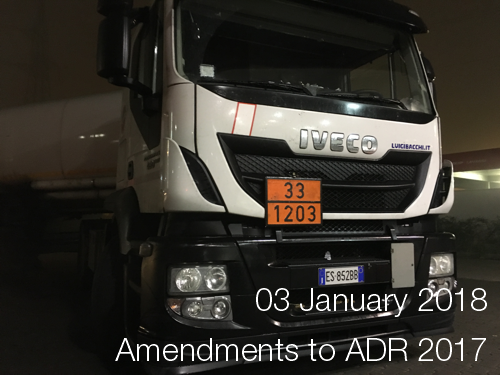
ADR: Amendments into force since 3 January 2018
European Agreement concerning the International Carriage of Dangerous Goods by Road
C.N.626.2017.TREATIES-XI.B.14 (Depositary Notification)
By 3 October 2017, none of the Contracting Parties to the above-mentioned Agreement had communicated an objection to the Secretary-General. Consequently, in accordance with the provisions of article 14 (3) of the Agreement, the proposed amendments to annexes A and B, as amended, shall enter into force for all Contracting Parties on 3 January 2018.
Amendments into force since 3 January 2018
Depositary notifications C.N.345.2017.TREATIES-XI.B.14 and C.N.626.2017.TREATIES-XI.B.14
The amendments are contained in Annex III of document ECE/TRANS/WP.15/237
Multilateral Agreement M309
M309 9.2.2.2.1 Cables
Multilateral Agreement M309 under section 1.5.1 ADR concerning cables in accordance with 9.2.2.2.1 ADR
(1) By derogation from the provisions of the second paragraph of 9.2.2.2.1 of ADR the cables do not have to be tested as stipulated in ISO 16750-4:2010 and ISO 16750-5:2010.
However, they shall be suitable for the conditions in the area of the vehicle, such as temperature range and fluid compatibility conditions, under which they are intended to be used.
(2) This agreement shall be valid until 31 December 2018 for carriage on the territories of the ADR Contracting Parties signatory to this Agreement. If it is revoked before that date by one of the signatories, it shall remain valid until the above mentioned date only for carriage on the territories of those ADR Contracting Parties signatory to this Agreement which have not revoked it.
Bonn, 01 December 2017
| COUNTRY | SIGNED | REVOKED |
| Germany | 1/12/2017 | |
| France | 14/12/2017 | |
| United Kingdom | 22/12/2017 |
Date of expiry: 31 December 2018
Safety ADR© Dangerous Goods ADR app: available Google Android
Safety ADR© – Dangerous Goods ADR app IT/EN
07.12.2017: Safety ADR now available SO Google Android 5.1 and up.
Safety ADR© app Dangerous Goods ADR
ADR 2017 – European Agreement concerning the International Carriage of Dangerous Goods by Road.
This update version has been prepared on the basis of amendments ADR applicable as from January 1st, 2017.
Safety ADR© is an app that allows you to:
– Search the full table A cap. 3.2 ADR for UN / name / class / other* (Italian, English);
– Fill in the ADR for each subject “Substance Report” with the “Safety” parameter (1) (Italian, English);
– Fill in the ADR for each subject “Tremcards P.0″(2) (Italian, English);
– Read/Print/share/send PDF of Instructions in Writing according to ADR 5.4.2 (English, Italian, French, Russian, Danish, Latvian, Norwegian, Swedish, German, Hungarian, Romanian, Portuguese, Czech, Spanish, Turkish, Slovenian, Slovak, Estonian, Dutch (Belgium), Dutch (Netherlands), Polish, Finnish, Lithuanian, Bulgarian, Greek, Serbian);
– Get news on the home screen;
– Read/Print the ADR agreement (English, French, Russian);
– See ADR labels, classes, Kemler (Italian, English).
The completed documents, “Substance Report” and “Tremcards P.0” can be saved via e-mail in pdf format.
Screenshot Android app:
07.12.2017: What’s news
(1) Safety
The “Safety” parameter for information on the “Safety Area” (S.A.), depends on the quantity “Q” of carried goods and the code “Kemler” corrected by a “K” factor, for which it is believed that the goods to be transported duly bounded to that value in the event of an accident that could pose a risk to public health and safety (carefully read the Disclaimer).
(2) Tremcards P.0
The “Tremcards P.0” (Transport Emergency Cards – P.0) consists of 4 pages: Instruction in writing according ADR + Page “0” of Getting Started Certifico “P.0”.
The “P.0” was introduced in addition to the Instruction in writing according ADR to facilitate a better identification of the goods carried in emergency situation and as indicated in note 2 on page 3 of the Instruction in writing to add “Additional guidance”:
ADR cap. 5.4.3 Note (2) Instruction in writing: “Additional guidance shown above may be adapted to reflect the classes of dangerous goods to be carried and their means of transportation”
Price: € 9,99
In-app Products: € 23,99
Category: Productivity
Date: dec 07, 2017
Version: 1.0.4
Size: 64.2 MB
Languages: English, Bulgarian, Czech, Danish, Dutch, Estonian, Finnish, French, German, Greek, Hungarian, Italian, Latvian, Lithuanian, Norwegian Bokmål, Polish, Portuguese, Romanian, Russian, Serbian, Slovak, Slovenian, Spanish, Swedish, Turkish
Sellers: I certify S.r.l.
© 2004-2017 I certify S.r.l. – Italty
info@certifico.com
+39 075 5997363
Safety and Tremcards P.0 are trademarks of Certifico S.r.l. – Italy.
*The app has only 40 materials ADR , the complete database of ADR materials is purchasable, after installation, by in-app purchase.
Safety ADR© Dangerous Goods app: disponibile Google Android
Safety ADR© – Dangerous Goods app IT/EN
07.12.2017: Safety ADR è disponibile anche per SO Google Android da 5.1
Safety ADR© è un’app per il trasporto di merci pericolose ADR che consente di:
– view all Table A cap. 3.2 ADR per ONU/denominazione/classe/altro* (Italiano, Inglese);
– compilare per ciascuna materia ADR il “Report materia” con il parametro “Safety” (1) (Italiano, Inglese);
– compilare per ciascuna materia ADR la “Tremcards P.0” (2) (Italiano, Inglese);
– consultare le Istruzioni Scritte secondo l’ADR (Inglese, Italiano, Francese, Russo, Danese, Lettone, Norvegese, Svedese, Tedesco, Ungherese, Romeno, Portoghese, Ceco, Spagnolo, Turco, Sloveno, Slovacco, Estone, Neerlandese (Belgio), Neerlandese (Paesi Bassi), Polacco, Finlandese, Lituano, Bulgaro, Greco, Serbo);
– avere news in tempo reale visualizzate direttamente in Home;
– consultare l’accordo ADR (Inglese, Francese, Russo);
– consultare le etichette ADR, le classi, i Kemler (Italiano, Inglese).
I nuovi screenshot Google Android:
ADR 2017 – Accordo europeo relativo al trasporto internazionale di merci pericolose su strada.Update. 1.0.4
(1) Safety
Il parametro “Safety” dà informazioni sull’Area di Sicurezza (A.S.), dependent on the amount of goods transported “Q” e dal codice “Kemler” corretta da un fattore “K”, for which it is believed that the transported goods should be properly defined to this value in the event of an accident that could pose a risk to health and public safety (carefully read the Disclaimer).
(2) Tremcards P.0
La “Tremcards P.0” (Transport Emergency Cards – P.0) is formed from 4 pages of written instructions official ADR + Page 0 di Informazioni Preliminari Certifico “P.0”.
La pagina “P.0” è stata introdotta in aggiunta alle Istruzioni Scritte ADR per facilitare una migliore individuazione delle merci trasportate in caso di emergenza e come indicato in nota 2 page 3 delle Istruzioni Scritte ADR per aggiungere “Ulteriori Istruzioni”:
ADR 5.4.3 Note (2) written instructions:
“Le ulteriori istruzioni qui sopra indicate possono essere adattate in relazione alle classi di merci pericolose trasportate e al mezzo di trasporto.”
ADR 2017 – Accordo europeo relativo al trasporto internazionale di merci pericolose su strada.
Safety e Tremcards P.0 sono modelli depositati Certifico S.r.l. – Italia
Prezzo: € 9,99*
Acquisto database ADR 2017: € 23,99 (Acquisto in app)
Categoria: Produttività
Pubblicato: 07/12/2017
Versione: 1.0.4
Dimensioni: 64.2
Lingue: Italiano, Inglese
Sviluppatore: I certify S.r.l.
© 2000-2017 I certify S.r.l.
Safety e Tremcards P.0 sono modelli depositati Certifico S.r.l. – Italia
*L’app presenta solo 40 materie ADR, il database completo delle materie ADR è acquistabile, dopo l’installazione, con l’acquisto in app.
SOLAS Convention Consolidated Ed. 2014
International Convention for the Safety of Life at Sea (SOLAS)
The SOLAS International Convention, which stands for Safety of Life At Sea, is an international agreement developed by the International Maritime Organization (IMO), aimed at protecting the safety of merchant shipping, with explicit reference to the protection of human life at sea.
Adopted: 1 November 1974
The SOLAS convention in its later forms is generally considered the most important of all international treaties relating to the safety of merchant ships. The first version was adopted in 1914, in response to the disaster of the Titanic, the second in 1929, the third in 1948 and the fourth in 1960. The 1974 version includes the tacit acceptance procedure – which provides that an amendment enters into force the a specific date unless, before that date, objections to the amendment are received by an agreed number of Parties.
As a result, the 1974 Convention has been updated and amended on numerous occasions. The Convention in force today is sometimes referred to as SOLAS, 1974, as amended.
The main objective of the SOLAS Convention is to specify the minimum standards for the construction, equipment and operation of ships, compatible with their safety. Flag States have a responsibility to ensure that ships under their flag meet their requirements and a number of certificates is prescribed in the Convention as evidence that this has been done. The control provisions also allow Contracting Governments to inspect ships of other Contracting States if there are reasonable grounds for believing that the ship and its equipment are not substantially in conformity with the requirements of the Convention – this procedure is known as port State control. The current SOLAS convention includes articles laying down general obligations, amendment procedures, and so forth, followed by an annex divided into 12 chapters.
Chapter I – General provisions
Chapter II-1 – Construction – Subdivision and stability, machines and electrical installations
Chapter II-2 – Fire protection, fire detection and fire extinguishing
Chapter III – Rescue devices and provisions
Chapter IV – Radiocommunication
Chapter V – Navigation security
Chapter VI – Cargo transportation
Chapter VII – Transport of dangerous goods
Chapter VIII – Nuclear ships
Chapter X – Security measures for high-speed craft
Chapter XI-1 – Special measures to improve maritime safety
Chapter XI-2 – Special measures to strengthen maritime safety
Chapter XII – Additional security measures for bulk carriers
Chapter XIII – Verification of conformity
Chapter XIV – Security measures for ships operating in polar waters
Changes
The 1974 Convention was amended several times to keep it updated.
The first version was adopted in 1914, in response to the Titanic disaster, the second in 1929, the third in 1948 and the fourth in 1960.
The amendments adopted by the Maritime Safety Committee (MSC) are listed in the MSC Resolutions (link to the SOLAS amendments list from 1981 to 2009).
Source: IMO
Convenzione SOLAS Ed. Consolidate 2104
Convenzione internazionale per la sicurezza della vita in mare (SOLAS)
La Convenzione internazionale SOLAS, acronimo di Safety Of Life At Sea è un accordo internazionale elaborato dall’Organizzazione Marittima Internazionale (IMO), volta a tutelare la sicurezza della navigazione mercantile, con esplicito riferimento alla salvaguardia della vita umana in mare.
Adozione: 1 novembre 1974
Entrata in vigore: 25 maggio 1980 con la Legge 23 maggio 1980 n. 313
La convenzione SOLAS nelle sue forme successive è generalmente considerata il più importante di tutti i trattati internazionali relativi alla sicurezza delle navi mercantili. La prima versione fu adottata nel 1914, in risposta al disastro del Titanic, la seconda nel 1929, la terza nel 1948 e la quarta nel 1960. La versione del 1974 include la tacita procedura di accettazione – che prevede che un emendamento entri in vigore il una data specifica a meno che, prima di tale data, le obiezioni all’emendamento siano ricevute da un numero concordato di Parti.
Accordingly, la Convenzione del 1974 è stata aggiornata e modificata in numerose occasioni. La Convenzione in vigore oggi è a volte indicata come SOLAS, 1974, come modificata.
L’obiettivo principale della convenzione SOLAS è specificare le norme minime per la costruzione, l’equipaggiamento e il funzionamento delle navi, compatibili con la loro sicurezza. Gli Stati di bandiera hanno la responsabilità di garantire che le navi sotto la loro bandiera rispettino i propri requisiti e un numero di certificati è prescritto nella Convenzione come prova che ciò è stato fatto. Le disposizioni di controllo consentono inoltre ai Governi Contraenti di ispezionare navi di altri Stati Contraenti se vi sono fondati motivi per ritenere che la nave e le sue attrezzature non siano sostanzialmente conformi ai requisiti della Convenzione – questa procedura è nota come controllo dello Stato di approdo. L’attuale convenzione SOLAS comprende articoli che stabiliscono obblighi generali, procedure di modifica e così via, seguiti da un allegato suddiviso in 12 capitoli.
…
Capitolo I – General provisions
Capitolo II-1 – Costruzione – Suddivisione e stabilità, macchine e impianti elettrici
Capitolo II-2 – Protezione antincendio, rivelazione incendi e estinzione degli incendi
Capitolo III – Apparecchi e disposizioni di salvataggio
Capitolo IV – Radiocomunicazioni
Capitolo V – Sicurezza della navigazione Il
Capitolo VI – Trasporto di carichi
Capitolo VII – Trasporto di merci pericolose
Capitolo VIII – Navi nucleari
Capitolo X – Misure di sicurezza per le imbarcazioni ad alta velocità
Capitolo XI-1 – Misure speciali per migliorare la sicurezza marittima
Capitolo XI-2 – Misure speciali per rafforzare la sicurezza marittima
Capitolo XII – Misure di sicurezza supplementari per le navi portarinfuse
Capitolo XIII – Verifica della conformità
Capitolo XIV – Misure di sicurezza per le navi che operano in acque polari
Modifiche
La convenzione del 1974 è stata modificata più volte per tenerla aggiornata.
La prima versione fu adottata nel 1914, in risposta al disastro del Titanic, la seconda nel 1929, la terza nel 1948 e la quarta nel 1960.
Gli emendamenti adottati dal Comitato per la sicurezza marittima (MSC) sono elencati nelle Risoluzioni MSC (al link lista degli emendamenti SOLAS dal 1981 al 2009).
Fonte: IMO
Denmark Øresundstunnel: Dangerous Goods
Denmark Øresundstunnel: Dangerous Goods
Tunnel categories for Dangerous Goods in the Øresundstunnel (updated 15 November 2017):
From 06:00 am to 07:00 pm: Category D
From 07:00 pm to 06:00 am: Category B
___
Notification according to 1.9.5 (Tunnel restrictions)
1.9.5
TUNNEL RESTRICTIONS
Provisions concerning restrictions for the passage of vehicles through road tunnels are also included in Chapter 8.6.
1.9.5.2.1
1.9.5.2.2
Tunnel category A:
Tunnel category B:
| Class 1: Compatibility groups A and L; Class 3: Classification code D (UN Nos. 1204, 2059, 3064, 3343, 3357 and 3379); Class 4.1: Classification codes D and DT; and Self-reactive substances, type B (UN Nos. 3221, 3222, 3231 and 3232); Class 5.2: Organic peroxides, type B (UN Nos. 3101, 3102, 3111 and 3112). |
| When the total net explosive mass per transport unit is greater than 1000 kg: Class 1: Divisions 1.1, 1.2 and 1.5 (except compatibility groups A and L). |
| When carried in tanks: Class 2: Classification codes F, TF and TFC; Class 4.2: Packing group I; Class 4.3: Packing group I; Class 5.1: Packing group I. Class 6.1: UN No. 1510 |
Tunnel category C:
Restriction for the carriage of dangerous goods which may lead to a very large explosion, a large explosion or a large toxic release;
The following dangerous goods are considered to fulfil this criterion (2):
| Class 1: Divisions 1.1, 1.2 and 1.5 (except compatibility groups A and L); and Division 1.3 (compatibility groups H and J); Class 7: UN Nos. 2977 and 2978. |
| When the net explosive mass per transport unit is greater than 5000 kg: Class 1: Division 1.3 (compatibility groups C and G). |
| When carried in tanks: Class 2: Classification codes 2A, 2O, 3A and 3O, and classification codes containing the letter T only or letter groups TC, TO and TOC Class 3: Packing group I for classification codes FC, FT1, FT2 and FTC; Class 6.1: Packing group I, except UN No. 1510 Class 8: Packing group I for classification codes CT1, CFT and COT. |
| Class 1: Division 1.3 (compatibility groups C and G); Class 2: Classification codes F, FC, T, TF, TC, TO, TFC and TOC; Class 4.1: Self-reactive substances, types C, D, E and F; and UN Nos. 2956, 3241, 3242, 3251, 3531, 3532, 3533 and 3534; Class 5.2: Organic peroxides, types C, D, E and F; Class 6.1: Packing group I for classification codes TF1, TFC and TFW and UN No.3507; and Toxic by inhalation entries for which special provision 354 is assigned in column (6) of Table A of Chapter 3.2 and toxic by inhalation entries of UN Nos. 3381 to 3390; Class 8: Packing group I for classification codes CT1, CFT and COT; Class 9: Classification codes M9 and M10. |
| When carried in bulk or in tanks: Class 3 Class 4.2: Packing group II; Class 4.3: Packing group II; Class 6.1: Packing group II; and Packing group III for classification code TF2; Class 8: Packing group I for classification codes CF1, CFT and CW1; and Packing group II for classification codes CF1 and CFT Class 9: Classification codes M2 and M3. |
Safety ADR: ADR, Tremcards, report substance: pdf/print/share
Safety ADR© – Update ADR 2017
All ADR (EN), Official Tremcards (Tremcards) in 26 Languages available in Display, Print, and Sharing.
Additionally, with Tremcards P.0, you can add the “P0” page for more information to the Tremcards.
All functions at Functions
Download Tremcards:
| Tremcards SE | Safety ADR 2017 | SE |
| Tremcards TU | Safety ADR 2017 | TU |
| Tremcards NO | Safety ADR 2017 | NO |
| Tremcards LIT | Safety ADR 2017 | LIT |
| Tremcards LE | Safety ADR 2017 | LET |
| Tremcards EST | Safety ADR 2017 | EST |
| Tremcards SLV | Safety ADR 2017 | SLV |
| Tremcards RO | Safety ADR 2017 | RO |
| Tremcards HU | Safety ADR 2017 | HU |
| Tremcards SL | Safety ADR 2017 | SL |
| Tremcards CK | Safety ADR 2017 | CK |
| Tremcards PL | Safety ADR 2017 | PL |
| Tremcards GK | Safety ADR 2017 | GK |
| Tremcards PT | Safety ADR 2017 | PT |
| Tremcards FI | Safety ADR 2017 | FI |
| Tremcards SV | Safety ADR 2017 | SV |
| Tremcards DA | Safety ADR 2017 | DA |
| Tremcards BE | Safety ADR 2017 | BE |
| Tremcards NL | Safety ADR 2017 | NL |
| Tremcards RU | Safety ADR 2017 | RU |
| Tremcards EN | Safety ADR 2017 | EN |
| Tremcards FR | Safety ADR 2017 | IT |
| Tremcards ES | Safety ADR 2017 | ES |
| Tremcards DE | Safety ADR 2017 | IT |
| Tremcards BU | Safety ADR 2017 | BUL |
| Tremcards IT | Safety ADR 2017 | IT |
Click zoom
Official Organization: UNECE


